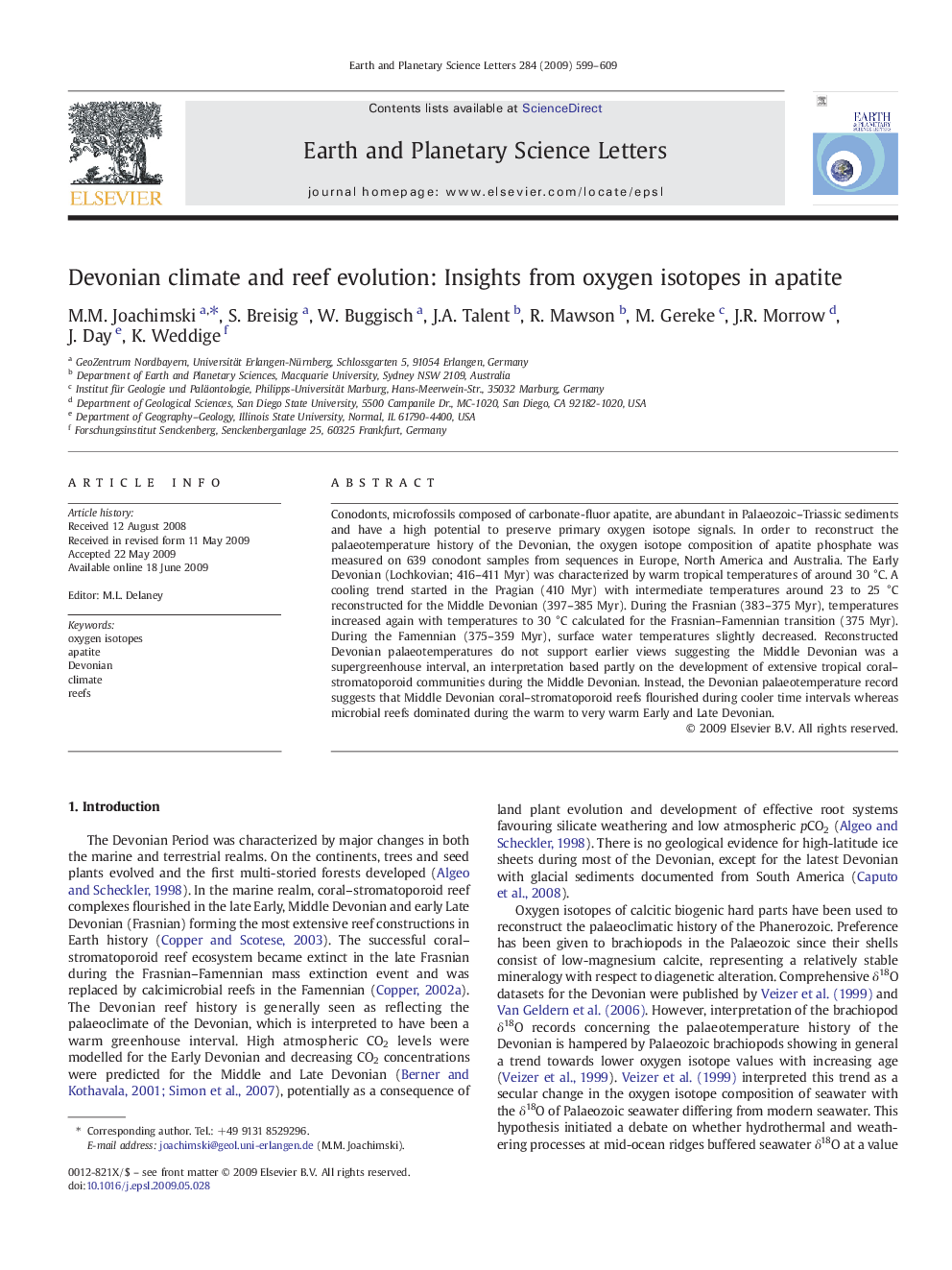| Article ID | Journal | Published Year | Pages | File Type |
|---|---|---|---|---|
| 4679012 | Earth and Planetary Science Letters | 2009 | 11 Pages |
Conodonts, microfossils composed of carbonate-fluor apatite, are abundant in Palaeozoic–Triassic sediments and have a high potential to preserve primary oxygen isotope signals. In order to reconstruct the palaeotemperature history of the Devonian, the oxygen isotope composition of apatite phosphate was measured on 639 conodont samples from sequences in Europe, North America and Australia. The Early Devonian (Lochkovian; 416–411 Myr) was characterized by warm tropical temperatures of around 30 °C. A cooling trend started in the Pragian (410 Myr) with intermediate temperatures around 23 to 25 °C reconstructed for the Middle Devonian (397–385 Myr). During the Frasnian (383–375 Myr), temperatures increased again with temperatures to 30 °C calculated for the Frasnian–Famennian transition (375 Myr). During the Famennian (375–359 Myr), surface water temperatures slightly decreased. Reconstructed Devonian palaeotemperatures do not support earlier views suggesting the Middle Devonian was a supergreenhouse interval, an interpretation based partly on the development of extensive tropical coral–stromatoporoid communities during the Middle Devonian. Instead, the Devonian palaeotemperature record suggests that Middle Devonian coral–stromatoporoid reefs flourished during cooler time intervals whereas microbial reefs dominated during the warm to very warm Early and Late Devonian.
